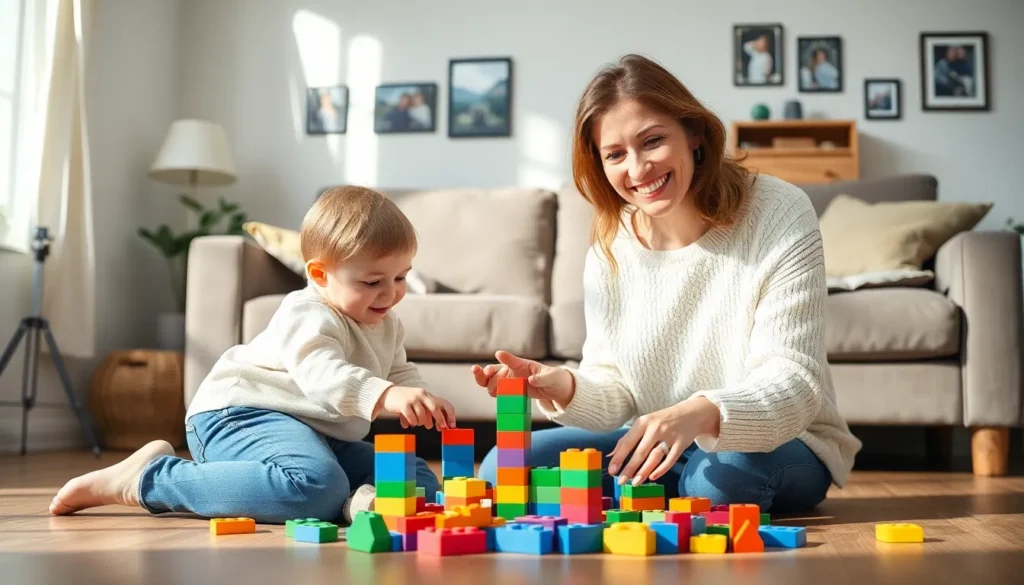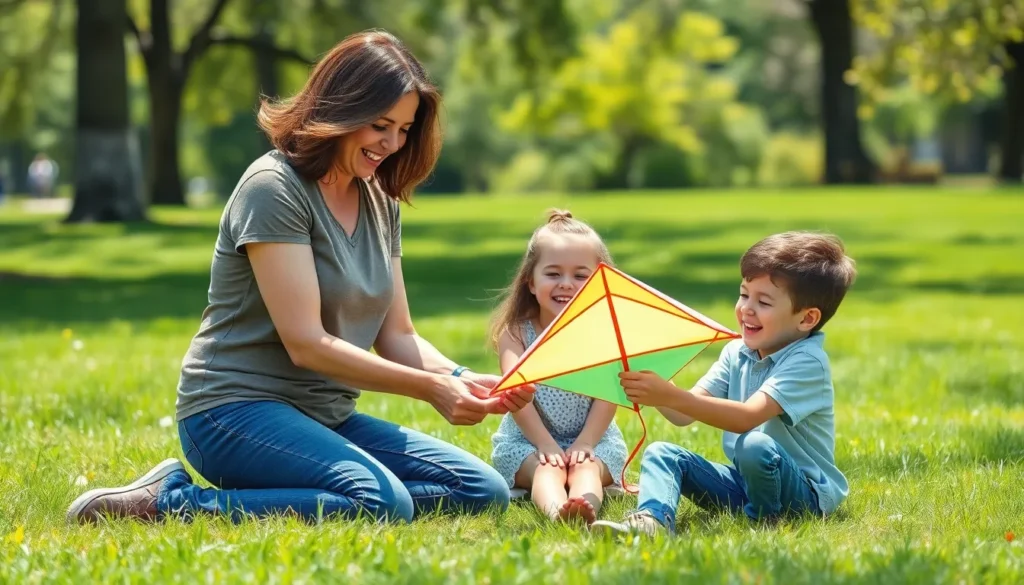Table of Contents
ToggleFor those who can’t sit still and feel the need to bounce off the walls while studying, kinesthetic learners know the struggle all too well. Traditional study methods often feel like trying to fit a square peg into a round hole. But fear not! There’s a world of study tips designed to turn that restless energy into productive learning.
Understanding Kinesthetic Learners
Kinesthetic learners grasp concepts best through physical activity. This learning style involves hands-on experiences, making movement integral to their educational approach.
Definition and Characteristics
Kinesthetic learners prefer engaging directly with materials and experiences. They often excel in activities such as dancing, sports, or acting. Characteristics include a preference for manipulating objects and using gestures while thinking. These individuals may struggle in traditional classroom settings because passive learning methods fail to capture their attention. Engaging in physical activities enhances their memory retention and understanding, which actively supports their learning process.
Learning Styles Comparison
Kinesthetic learners differ significantly from visual and auditory learners. Visual learners absorb information through images, diagrams, and written text. Auditory learners, on the other hand, retain knowledge primarily through listening. Unlike these two styles, kinesthetic learners thrive on movement and tactile experiences. While visual learners might excel at reading charts, kinesthetic learners excel in labs or hands-on projects. Understanding these differences allows educators to tailor their teaching methods and provide targeted support for each unique learning style.
Effective Study Tips for Kinesthetic Learners

Kinesthetic learners thrive on physical interactions and movement during study sessions. They retain information better when engaging in activities that involve their bodies.
Incorporating Movement into Study Sessions
Incorporating movement can significantly enhance learning for kinesthetic learners. Standing while reviewing notes encourages better retention. Walking during study breaks refreshes the mind and keeps energy levels high. Engaging in brief physical activities, like jumping jacks or stretching, can increase focus. Combining study material with movement, such as pacing while reciting information, helps reinforce concepts. Using tools like flashcards while walking allows for active involvement and effective memorization.
Utilizing Hands-On Learning Tools
Hands-on learning tools are vital for kinesthetic learners. Using models or manipulatives aids in comprehending complex topics, such as scientific concepts. Crafting diagrams with physical materials fosters a deeper connection to the subject matter. Experimenting with interactive software can provide immersive learning experiences. Role-playing scenarios enhances understanding of social studies or literature. Keeping a journal to document insights and reflections serves as a tangible way to engage with content.
Creating a Dynamic Study Environment
A dynamic study environment boosts engagement and retention for kinesthetic learners. Incorporating movement and tactile experiences creates an optimal learning atmosphere.
Setting Up a Flexible Workspace
Flexibility in workspace design benefits kinesthetic learners. They thrive in areas that allow movement, so including exercise balls or standing desks can enhance focus. Arranging materials within reach eliminates unnecessary stops during study sessions. This setup encourages walking while reviewing notes or pacing during difficult concepts. Including interactive tools, such as models or crafts, makes learning visually and physically stimulating. Creating designated spaces for various activities, like standing or using hands-on tools, provides structure while allowing movement.
Engaging in Interactive Group Studies
Group studies offer additional engagement opportunities for kinesthetic learners. Encouraging collaboration fosters interaction and strengthens understanding of subjects. Role-playing educational scenarios creates a lively learning experience, as learners actively participate rather than observe. Incorporating physical games or movement-based challenges can reinforce concepts effectively. Holding discussions while standing or moving promotes energy and focus. Combining study materials with tactile experiences, like quizzes or discussions, engages different learning styles within a group, enhancing the overall educational experience.
Practical Techniques to Enhance Learning
Effective study techniques help kinesthetic learners engage with material actively. Many strategies incorporate movement, reinforcing knowledge retention.
Using Flashcards and Models
Flashcards serve as a tactile tool for kinesthetic learners. By creating physical flashcards, they can manipulate and sort them, making the process interactive. Models bring abstract concepts to life, allowing learners to explore structures and systems physically. Building three-dimensional representations of ideas fosters a deeper understanding. Experimenting with varied materials in constructing models enhances creativity and engagement. Frequent repurposing of flashcards also reinforces memory through active recall.
Incorporating Real-Life Experiences
Kinesthetic learners benefit from hands-on experiences that connect classroom knowledge to real situations. Organizing field trips or practical workshops creates memorable learning opportunities. Engaging in community projects allows them to apply skills in real-world contexts. These experiences facilitate direct engagement with concepts, deepening understanding significantly. Role-playing exercises replicate scenarios, strengthening comprehension through active participation. Relating theoretical knowledge to practical application supports retention and keeps learning exciting.
Kinesthetic learners possess unique strengths that can be harnessed through tailored study strategies. By integrating movement and hands-on activities into their learning routines, they can significantly enhance their understanding and retention of information. Creating an engaging study environment that encourages physical interaction with materials fosters a deeper connection to the subject matter.
Incorporating techniques like role-playing and real-life experiences not only makes learning enjoyable but also reinforces concepts effectively. With the right approach, kinesthetic learners can thrive academically, turning their natural inclinations into powerful tools for success.







